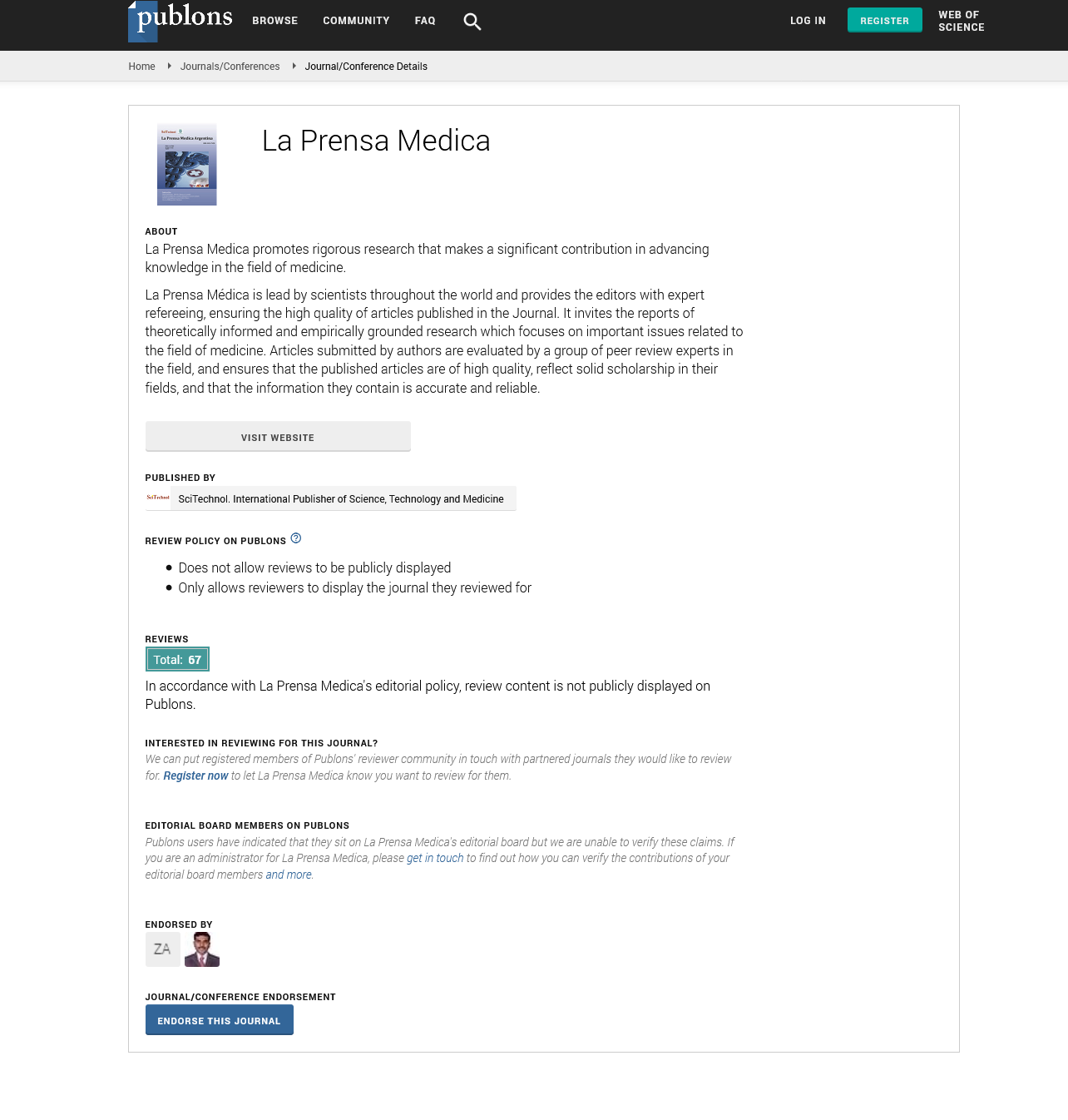Opinion Article, La Prensa Medica Vol: 109 Issue: 1
Pharmacokinetics and Pharmacodynamics of Second-Generation Sulphonamides for Gonorrhoea Treatment
Joseph Kohl*
1Department of Health Sciences, University of Mauritius, Reduit, Mauritius
*Corresponding Author: Joseph Kohl,
Department of Health Sciences, University
of Mauritius, Reduit, Mauritius
E-mail: jspk@uom.ac.mu
Received date: 28 March, 2023, Manuscript No. LPMA-23-100500
Editor assigned date: 31 March, 2023, PreQC No. LPMA-23-100500 (PQ);
Reviewed date: 14 April, 2023, QC No. LPMA-23-100500;
Revised date: 21 April, 2023, Manuscript No. LPMA-23-100500 (R);
Published date: 28 April, 2023, DOI: 10.4172/0032-745X.1000153
Citation: Kohl J (2023) Pharmacokinetics and Pharmacodynamics of Second-Generation Sulphonamides for Gonorrhea Treatment. La Prensa Medica 109:1.
Description
Gonorrhea, caused by the bacterium Neisseria gonorrhoeae, is a sexually transmitted infection that poses significant public health challenges worldwide. With the emergence of antibiotic-resistant strains, the search for effective treatment options has become crucial. Second-generation sulphonamides have shown promise in treating gonorrhea due to their unique pharmacokinetic and pharmacodynamics properties. This will discuss the pharmacokinetics and pharmacodynamics of second-generation sulphonamides in the treatment of gonorrhea.
Pharmacokinetics refers to the study of drug absorption, distribution, metabolism, and elimination within the body. Second-generation sulphonamides, such as sulfamethoxazole and sulfisoxazole, exhibit favorable pharmacokinetic profiles that contribute to their efficacy against gonorrhea. Oral administration is the primary route for secondgeneration sulphonamides in treating gonorrhea. These agents are wellabsorbed from the gastrointestinal tract, reaching peak plasma concentrations within a few hours. The absorption process is influenced by various factors, including drug formulation and patientspecific characteristics.
Second-generation sulphonamides have good tissue penetration, allowing them to reach therapeutic concentrations at the site of infection. They distribute widely in the body, including the genitourinary tract, where N. gonorrhoeae primarily resides. This characteristic is advantageous in effectively targeting the bacteria and combating the infection.
Metabolism of second-generation sulphonamides occurs primarily in the liver through acetylation and glucuronidation processes. The metabolites formed are usually inactive and are eliminated from the body through renal excretion. The rate of metabolism can vary among individuals due to genetic factors and concurrent use of other medications, necessitating careful consideration during dosing.
Renal elimination plays a significant role in the clearance of second-generation sulphonamides. The relatively short half-lives of these drugs allow for frequent dosing, ensuring sustained therapeutic levels. In patients with compromised renal function, dose adjustments may be necessary to prevent drug accumulation and potential toxicity. Pharmacodynamics focuses on the relationship between drug concentration and its therapeutic effect. The pharmacodynamics properties of second-generation sulphonamides contribute to their efficacy against gonorrhea.
Sulphonamides inhibit bacterial growth by competitively inhibiting the enzyme dihydropteroate synthase, an essential enzyme in the synthesis of folic acid. By disrupting folic acid production, sulphonamides impede nucleic acid synthesis and subsequent bacterial replication. This mechanism of action is effective against N. gonorrhoeae, making second-generation sulphonamides suitable for treatment. Second-generation sulphonamides exhibit concentrationdependent bactericidal activity, meaning that higher drug concentrations lead to increased bacterial killing. This property is advantageous in the treatment of gonorrhea, as achieving adequate drug concentrations at the site of infection is crucial for effective eradication of the bacteria. Second-generation sulphonamides can act synergistically with other antibiotics, such as trimethoprim, forming a combination known as co-trimoxazole. The combination enhances the antimicrobial activity against N. gonorrhoeae, reducing the likelihood of drug resistance and improving treatment outcomes.
Though second-generation sulphonamides have been effective in treating gonorrhea, the emergence of drug-resistant strains poses a significant challenge. Increasing resistance to sulphonamides highlights the importance of judicious antibiotic use and combination therapy to maximize their efficacy.
The pharmacokinetic and pharmacodynamics properties of secondgeneration sulphonamides make them valuable treatment options for gonorrhea. Their favorable absorption, distribution, metabolism, and elimination profiles, coupled with their mechanism of action and concentration-dependent bactericidal activity, contribute to their effectiveness. However, the emergence of antibiotic resistance necessitates ongoing research and the development of new treatment strategies. Collaborative efforts between healthcare professionals and researchers are essential to combat the challenges associated with gonorrhea treatment and ensure optimal patient outcomes.
 Spanish
Spanish  Chinese
Chinese  Russian
Russian  German
German  French
French  Japanese
Japanese  Portuguese
Portuguese  Hindi
Hindi 

